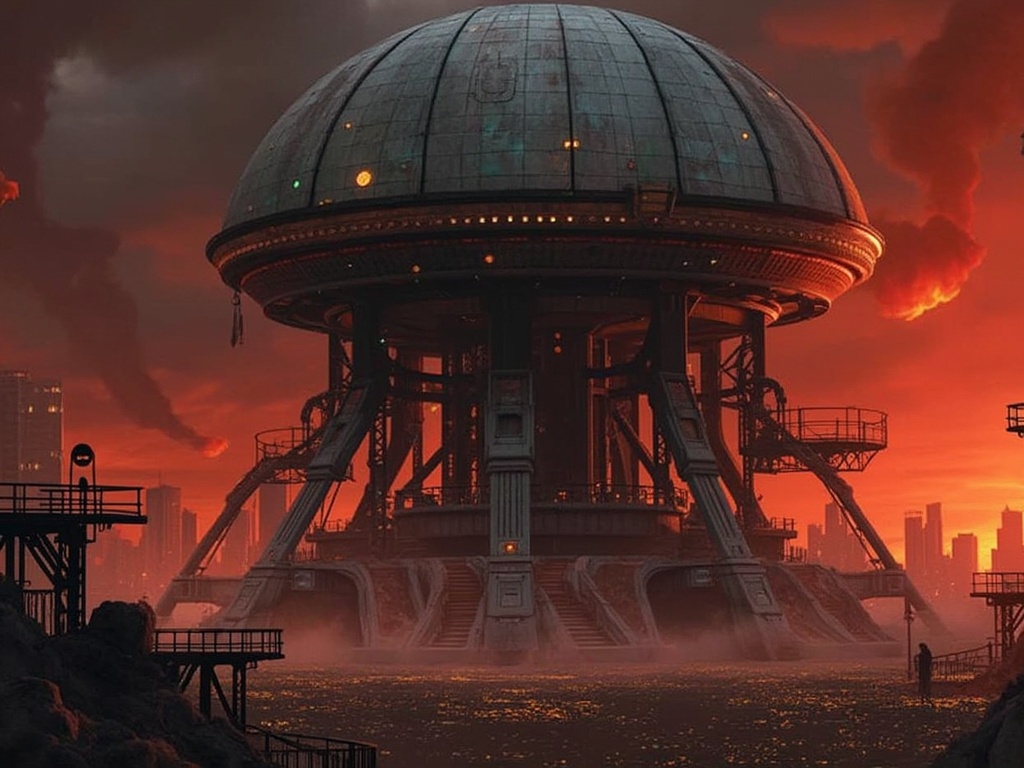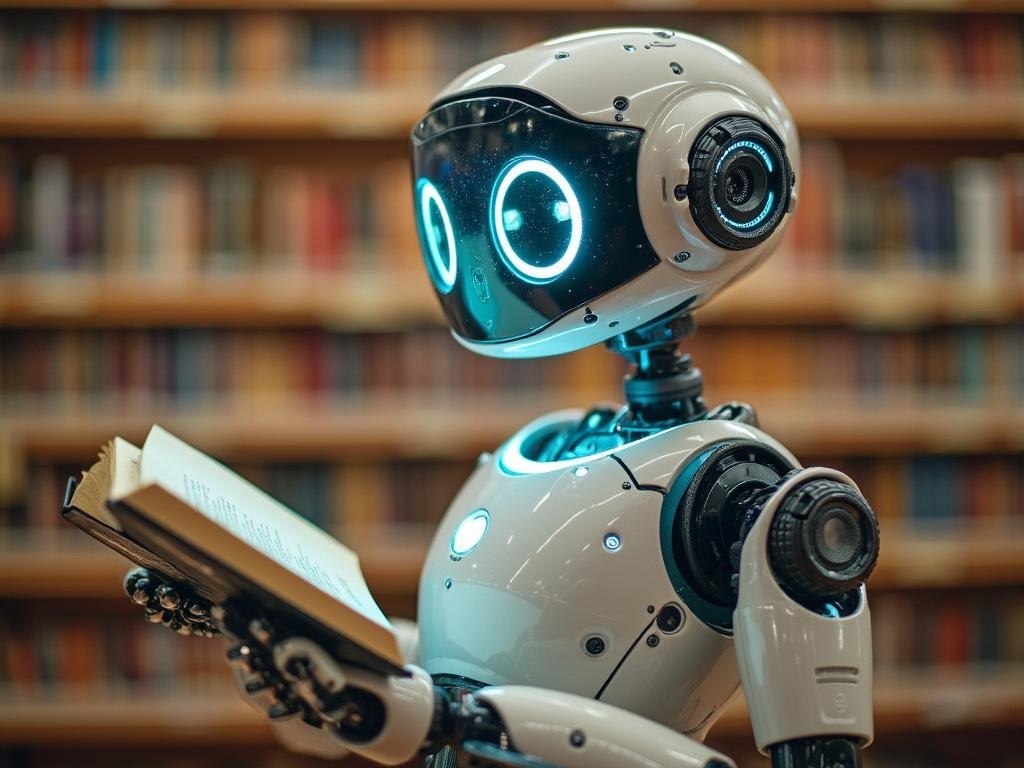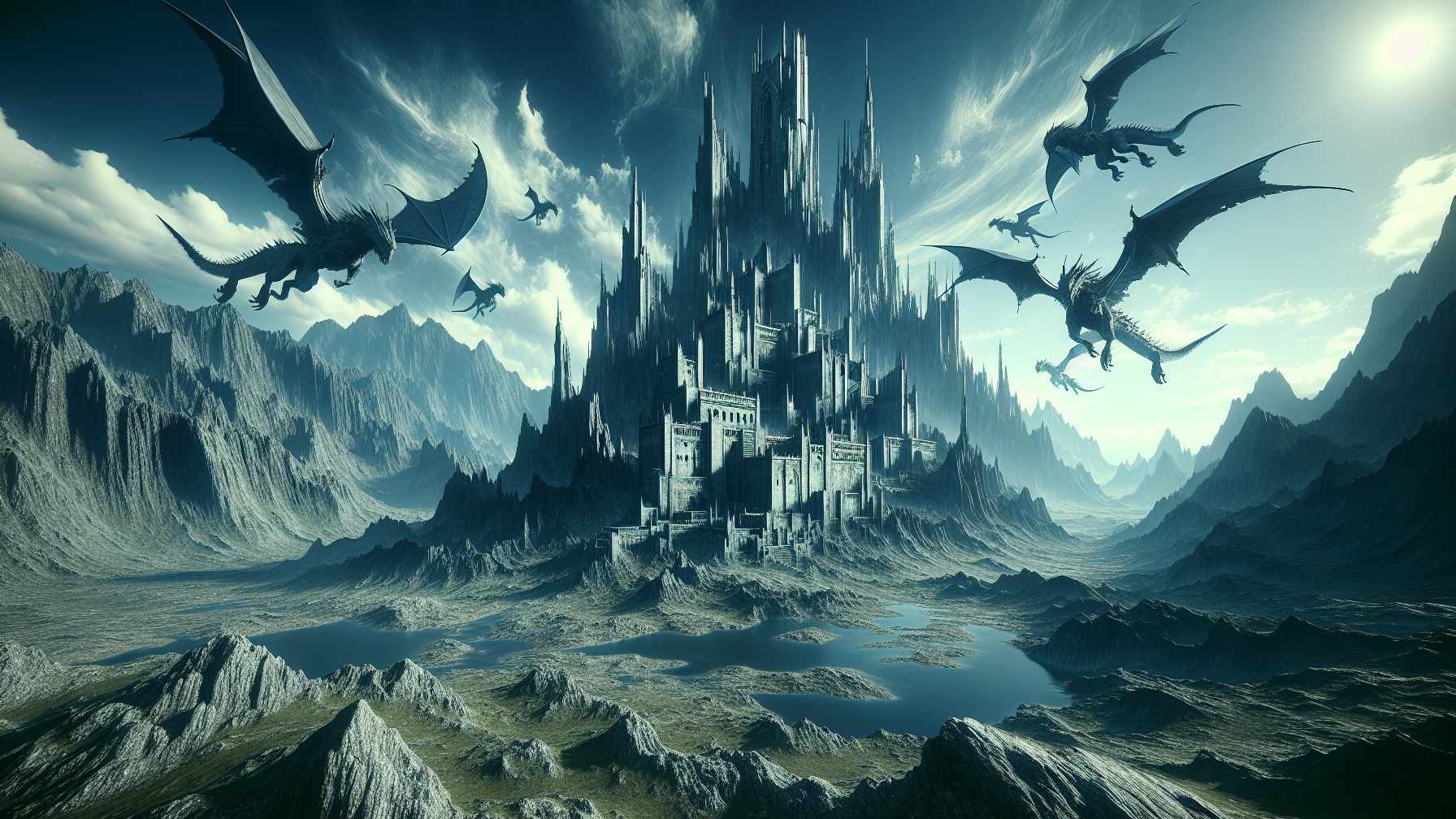The rise of AI-powered dystopian narrative tools has revolutionized how writers craft unsettling futures, with sophisticated platforms now able to generate complex societies, characters, and plot arcs that explore humanity’s darkest possibilities. These dystopian story generators have become essential resources for writers seeking to efficiently create compelling speculative fiction that examines societal collapse, authoritarian control, and technological dominance.
Key Takeaways
- AI dystopian story generators provide writers with immediate inspiration and help overcome creative blocks
- Leading platforms offer customizable themes ranging from environmental collapse to technological oppression
- Writers can generate complex character relationships and unexpected plot twists with specialized tools
- The technology analyzes classic dystopian elements to create authentic narrative structures
- Both free and premium options exist, making dystopian worldbuilding accessible to all creators
Introduction to AI Dystopian Storytelling
The landscape of dystopian fiction has transformed dramatically in the digital age. Traditional dystopian narratives like Orwell’s “1984” or Atwood’s “The Handmaid’s Tale” now share space with AI-generated stories that explore equally disturbing futures. This evolution represents more than just technological advancement – it signals a fundamental shift in how we create and consume speculative fiction.
An AI dystopian story generator harnesses sophisticated language models to craft compelling narratives about societies gone wrong. These tools analyze patterns in existing dystopian literature, identifying common themes, character archetypes, and narrative structures that make these stories resonate. They then apply this knowledge to create original content based on user prompts or parameters.
The growing popularity of these generators stems from their ability to help writers and worldbuilders quickly develop complex dystopian scenarios without starting from scratch. Whether you’re a novelist seeking inspiration, a game developer creating backstory, or a student exploring social commentary through fiction, these tools offer valuable shortcuts to meaningful content creation.
Leading AI Dystopian Story Generators Compared
Several standout platforms dominate the dystopia story generator landscape, each with unique strengths. I’ve evaluated these tools based on their output quality, customization options, ease of use, and specialized features.
Vondy Dystopian Generator excels in customizable themes and character development. Its ability to create multi-dimensional personalities facing moral dilemmas makes it particularly valuable for writers seeking psychological depth. The platform allows detailed world-building parameters, letting users specify everything from government structures to technological advancement levels.
Nairrate AI has built its reputation on specialized dystopian scenarios focusing on authoritarian regimes and environmental catastrophes. What sets it apart is its series support capabilities, maintaining thematic continuity across multiple connected stories. This makes it ideal for novelists and screenwriters developing longer narratives.
AI4Chat takes a different approach, prioritizing intricate plots with unexpected twists. Its algorithm excels at creating complex character relationships and moral gray areas. Many users report that its outputs feel less formulaic than competitors, with an emphasis on social dynamics that feels authentic rather than forced.
For those seeking free options, GenerateStory.io and Squibler offer unlimited access with fewer customization options. These platforms serve as excellent tools for building story worlds when you need quick brainstorming assistance or face creative blocks. While they may not match the output quality of premium services, they provide valuable starting points for further development.
Customization Features That Create Compelling Dystopias
The best dystopian short story generator platforms differentiate themselves through customization options that allow precise control over narrative elements. These features transform basic AI capabilities into powerful creative assistants.
Theme customization represents the foundation of effective dystopian generation. Quality platforms allow users to specify:
- Totalitarian control mechanisms (surveillance, thought police, propaganda)
- Resource scarcity scenarios (water wars, food shortages, energy crises)
- Environmental collapse parameters (climate disasters, uninhabitable zones)
- Technological dystopias (AI takeovers, transhumanism gone wrong)
- Social division frameworks (class systems, genetic hierarchies)
Character development options enable the creation of complex protagonists and antagonists. Advanced generators allow you to specify background details, psychological traits, and motivational factors that shape how characters navigate their dystopian reality.
Setting parameters help define the physical and social landscape. Users can input details about geographical location, urban/rural environments, technological advancement levels, and social structures. These elements create a cohesive backdrop against which the narrative unfolds.
Plot customization represents perhaps the most valuable feature for serious writers. The ability to specify narrative arcs, conflict types, and resolution patterns helps create stories that feel purposeful rather than random. Some platforms even allow the integration of specific plot points or themes the user wants to explore.
Popular Dystopian Themes and Settings
Today’s dystopian story plot generator tools excel at creating several recurring thematic categories that dominate contemporary speculative fiction. Understanding these themes helps writers choose the most appropriate generator for their specific project.
AI domination narratives have gained significant traction in recent years. These stories explore scenarios where artificial intelligence has surpassed human control, resulting in:
- Mass unemployment and economic collapse as humans become obsolete
- Surveillance states where AI systems monitor and control human behavior
- Underground resistance movements fighting against robotic overlords
- Philosophical explorations of consciousness as AI beings develop sentience
Pandemic collapse scenarios have taken on new relevance in our post-COVID world. Modern dystopian generators skillfully explore the societal implications of widespread disease, including:
- Logistical challenges of cure delivery in fractured societies
- Power struggles between medical authorities and political entities
- Ethical dilemmas about treatment prioritization and quarantine enforcement
- Psychological impacts of long-term isolation and fear
Genetic experimentation provides fertile ground for dystopian storytelling. These narratives often examine:
- Social stratification based on genetic modification access
- Unintended consequences of human enhancement technologies
- Identity questions for artificially modified individuals
- Corporate control of genetic resources and information
Environmental disaster scenarios remain perennially relevant as climate concerns grow. These stories typically explore:
- Resource wars over increasingly scarce essentials like water and arable land
- Migration crises as populations flee uninhabitable regions
- Technological adaptations to extreme conditions (underwater cities, desert survival)
- Power dynamics between regions differently affected by environmental change
AI Technology Behind Dystopian Generators
Understanding the technological foundations of a dystopian story generator helps users maximize its potential and work around limitations. These tools utilize several approaches to create their unsettling narratives.
Most modern generators employ probabilistic generation techniques based on large language models. These systems analyze massive text datasets, learning patterns in dystopian literature to predict what elements should follow given inputs. This approach creates varied outputs that avoid repetition but may sometimes produce logical inconsistencies.
Some platforms incorporate deterministic storytelling elements to maintain narrative coherence. These rule-based components ensure that certain storytelling principles are followed, creating more structured outputs. The balance between probabilistic creativity and deterministic structure varies significantly between platforms.
Pattern recognition represents a key capability for effective AI as a co-author. The system identifies common dystopian tropes and narrative structures, then implements them in ways that feel authentic rather than derivative. Advanced systems can recognize and apply subtler elements like foreshadowing, symbolism, and thematic parallelism.
Current limitations primarily involve contextual understanding and thematic depth. While AI can generate compelling surface narratives, it may struggle with nuanced social commentary or complex emotional arcs that make the best dystopian fiction resonate. Many writers use these tools for initial inspiration or structure, then add human insight to deepen the material.
Creative Applications and Benefits
Beyond basic story generation, these tools offer practical advantages for writers at all experience levels. Their versatility extends from professional publishing projects to educational applications.
Breaking writer’s block represents one of the most immediate benefits. When facing a creative impasse, generating a fresh dystopian concept can reignite inspiration. Many writers report that even if they don’t use the generated content directly, the process helps them think differently about their projects.
Social commentary benefits significantly from dystopian exploration. These generators help writers create thought-provoking scenarios that examine real-world issues through speculative lenses. By exaggerating current trends to logical extremes, dystopian fiction helps readers reconsider aspects of contemporary society they might otherwise take for granted.
Worldbuilding efficiency represents another significant advantage. Creating complex societal structures, technological systems, and environmental conditions traditionally requires extensive research and planning. AI generators compress this process, allowing writers to establish foundational elements quickly and focus their energy on character development and plot.
Many writers report that these tools help them explore unconventional narrative paths they might not have considered. The random associations and unexpected suggestions from AI can lead to creative breakthroughs that purely human brainstorming might miss.
Selecting the Right Dystopian Generator for Your Project
With numerous options available, choosing the appropriate dystopian story generator requires evaluating your specific needs against each platform’s strengths. I recommend considering several factors before making your selection.
Project scope significantly influences which generator will serve you best. Consider whether you need:
- Quick brainstorming tools for initial concept development
- Detailed world development capabilities for comprehensive projects
- Series support for maintaining consistency across multiple stories
- Character-focused generation vs. plot-oriented approaches
Complexity levels vary widely between platforms. Some offer intuitive interfaces suitable for beginners, while others provide advanced customization options with steeper learning curves. Evaluate your technical comfort and how much time you’re willing to invest in mastering a more sophisticated system.
Budget considerations play an obvious role in platform selection. Options range from:
- Free tools with basic functionality and potential output limitations
- Freemium models offering core features with premium upgrades
- Subscription services providing comprehensive capabilities and regular updates
- Pay-per-use models for occasional users needing high-quality outputs
I recommend experimenting with multiple generators before committing to one for a major project
The article discusses the emergence of AI-powered dystopian narrative tools that help writers create compelling speculative fiction about dark futures. These sophisticated platforms generate complex societies, characters, and plot arcs exploring themes like societal collapse, authoritarian control, and technological dominance.
Several leading platforms like Vondy Dystopian Generator, Nairrate AI, and AI4Chat offer different strengths in customization, theme development, and plot construction. Writers can specify elements ranging from totalitarian mechanisms to environmental collapse scenarios, creating multi-dimensional characters navigating morally complex situations.
Popular themes include AI domination, pandemic collapse, genetic experimentation, and environmental disasters. These tools serve as creative assistants, helping writers overcome blocks, develop social commentary, and build comprehensive worlds efficiently.
| Most Important Point |
|---|
| AI dystopian story generators have revolutionized speculative fiction writing by providing sophisticated tools that help creators efficiently develop complex dystopian worlds, characters, and narratives exploring humanity’s darkest possibilities, making dystopian worldbuilding accessible to writers of all experience levels. |



